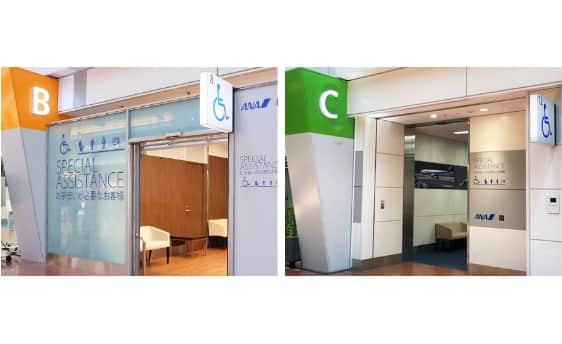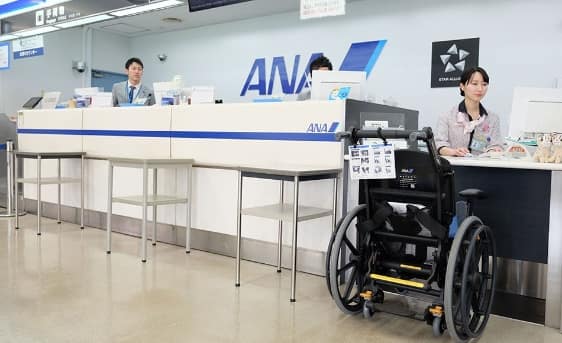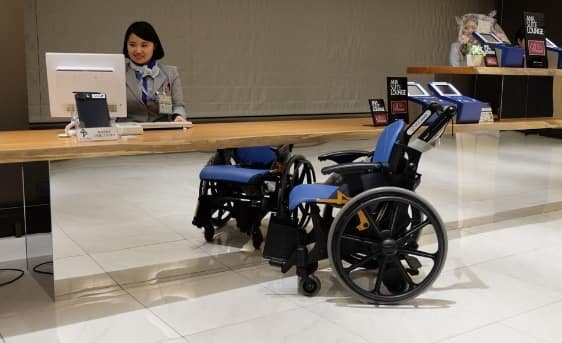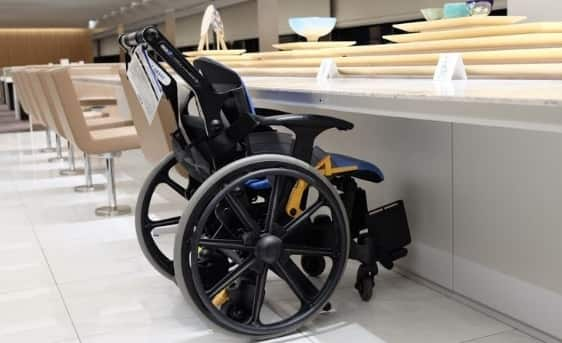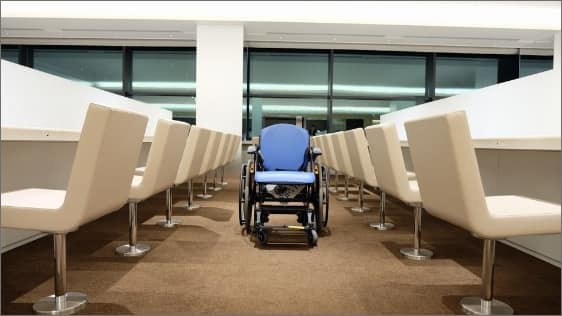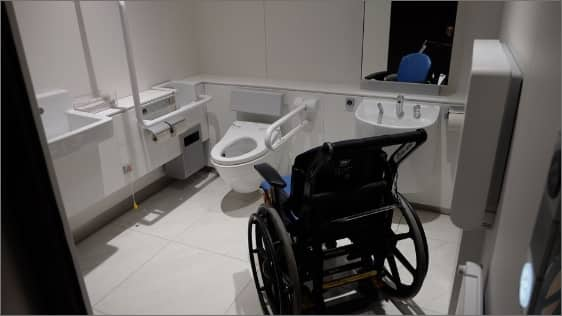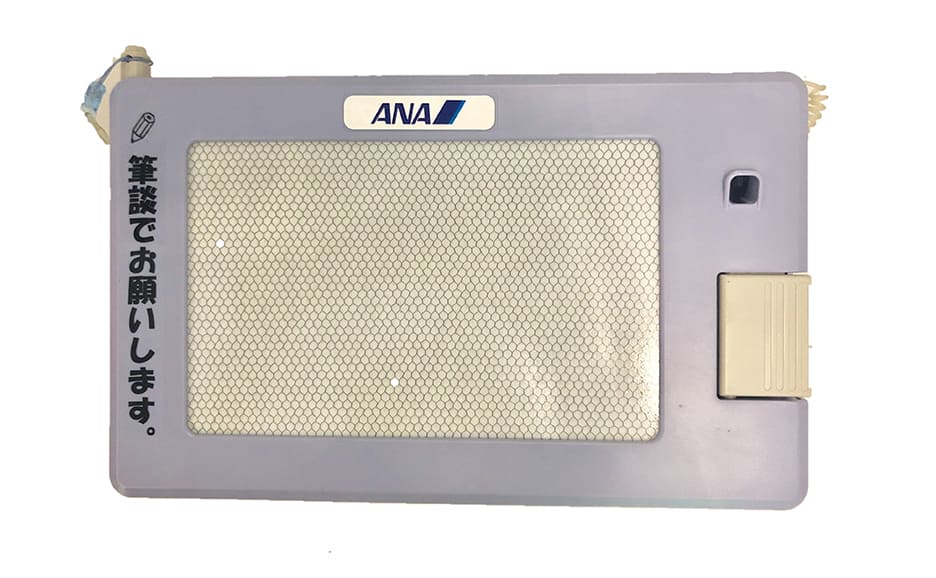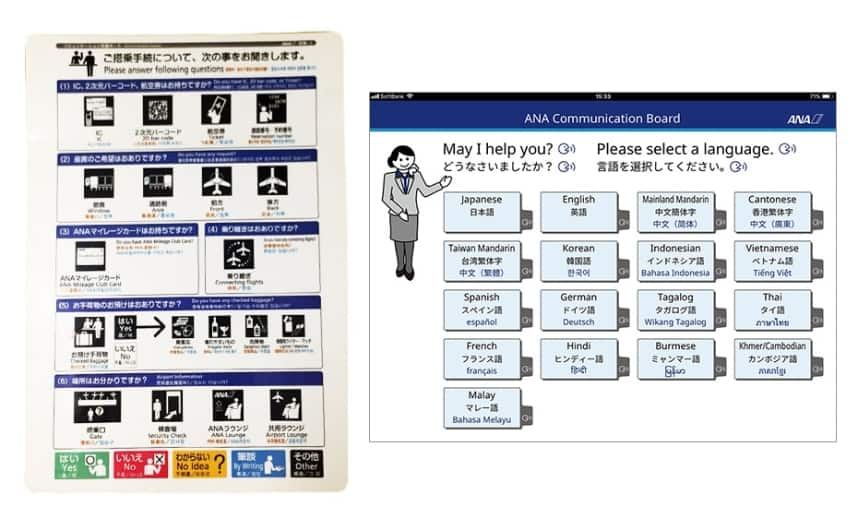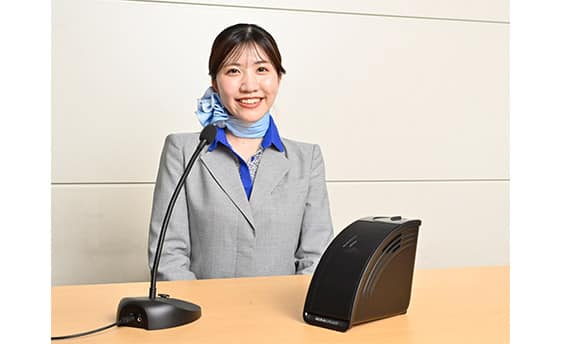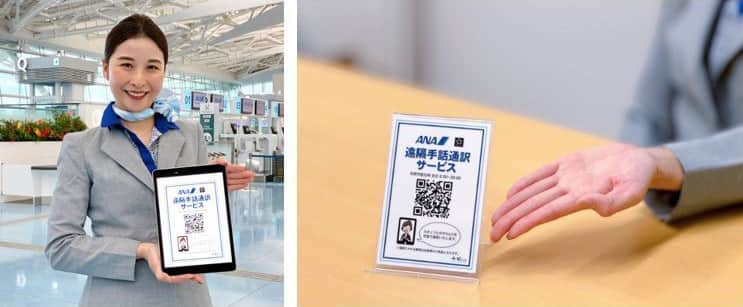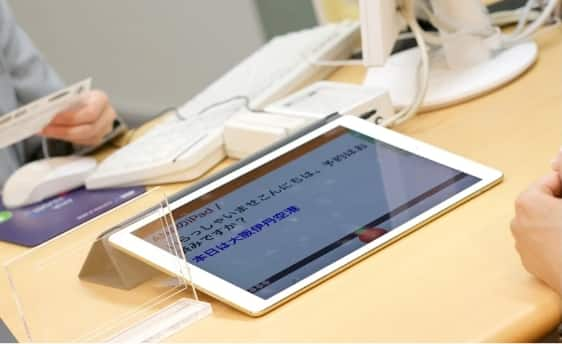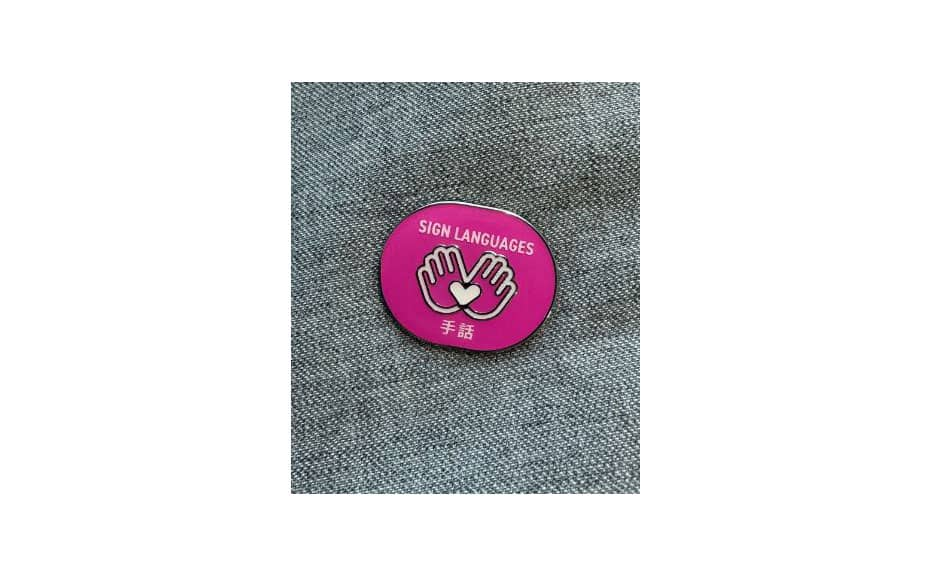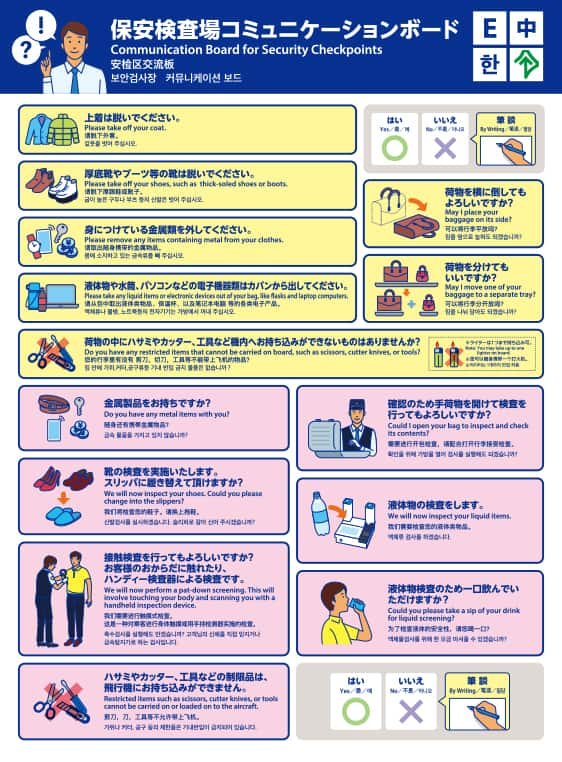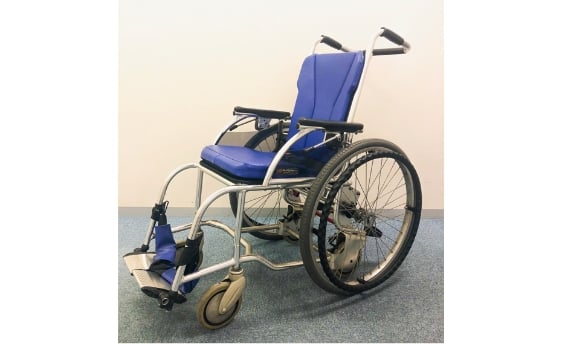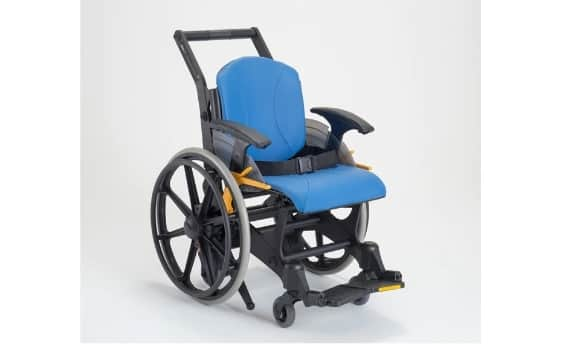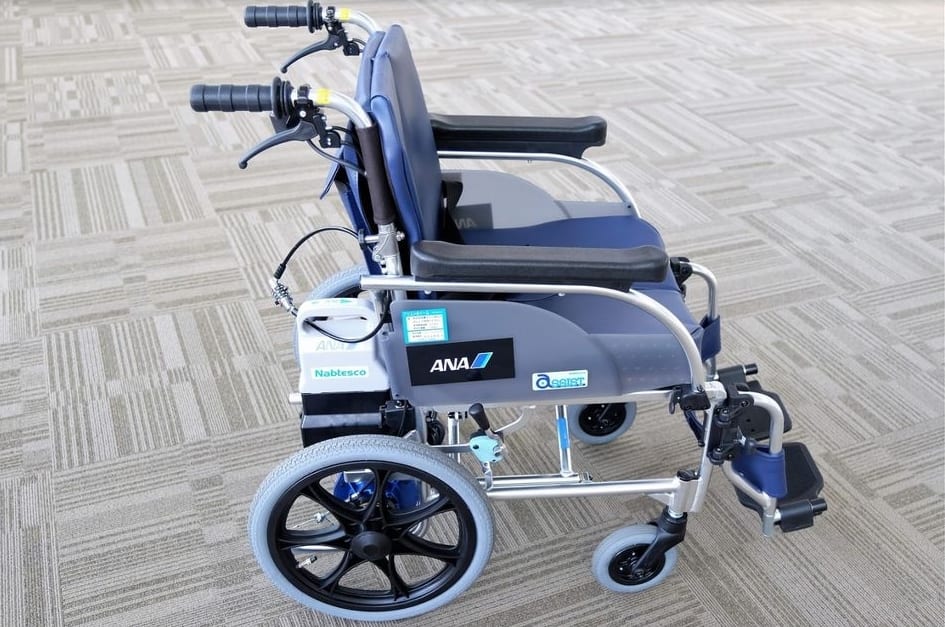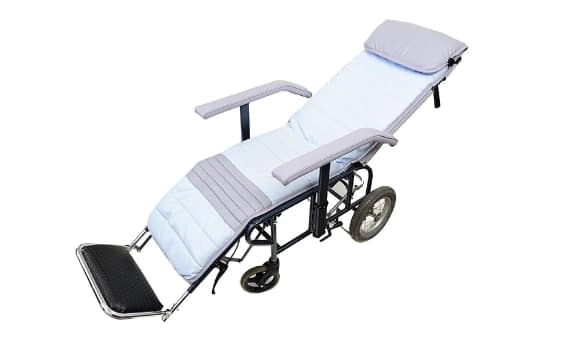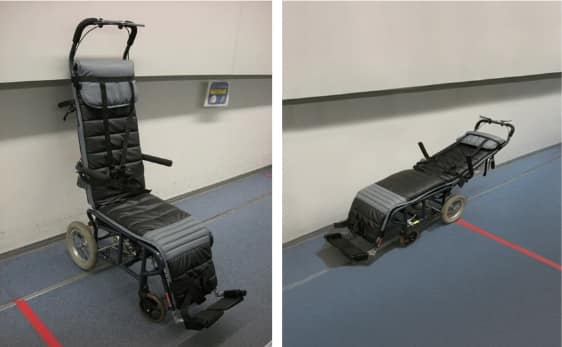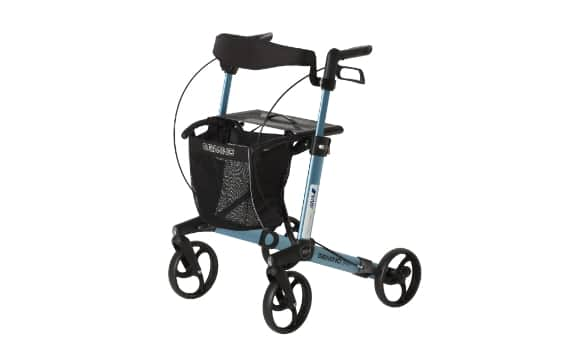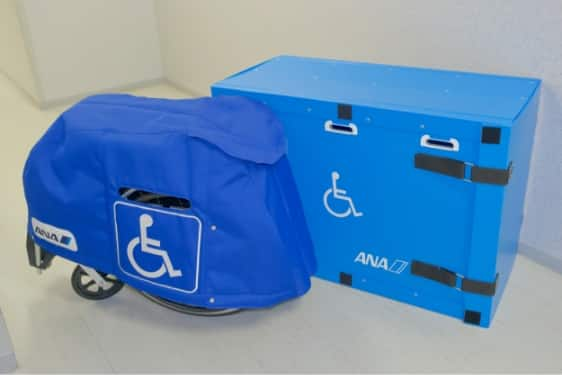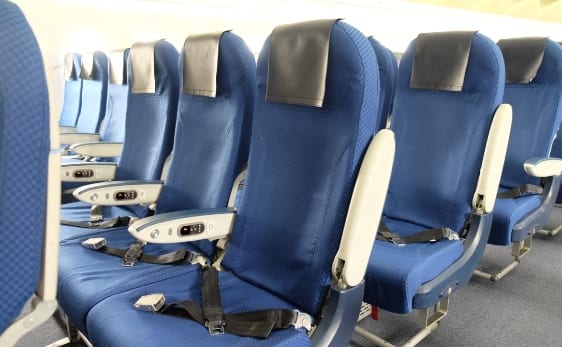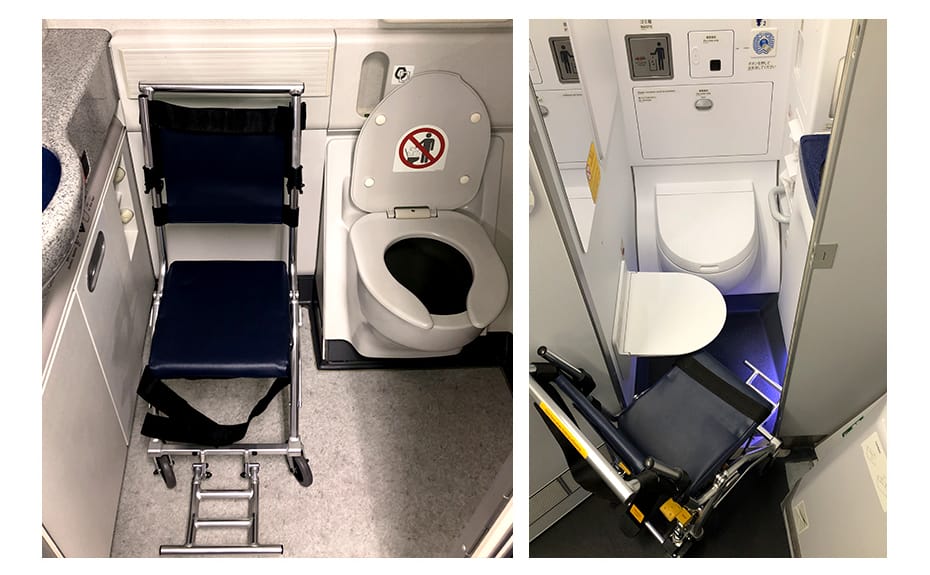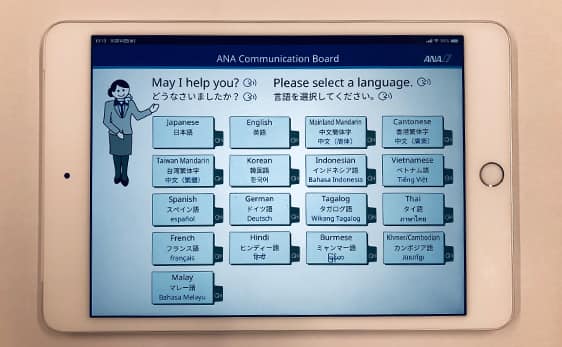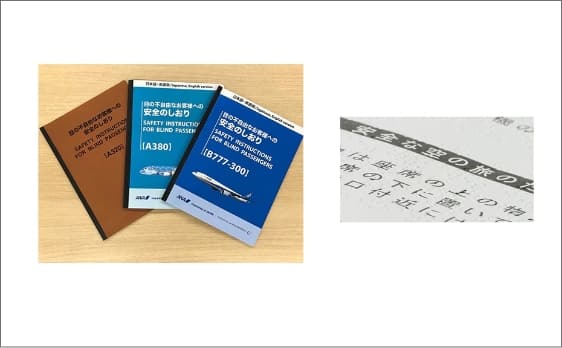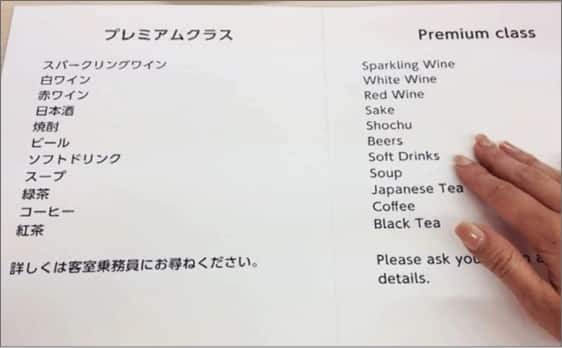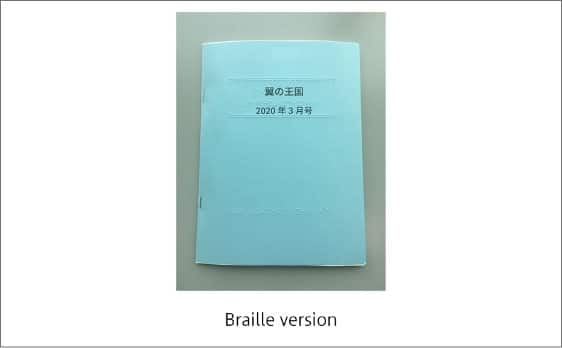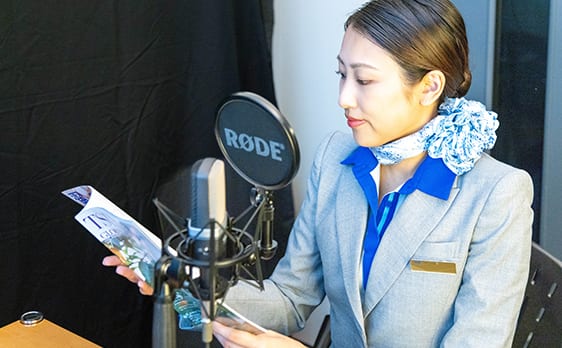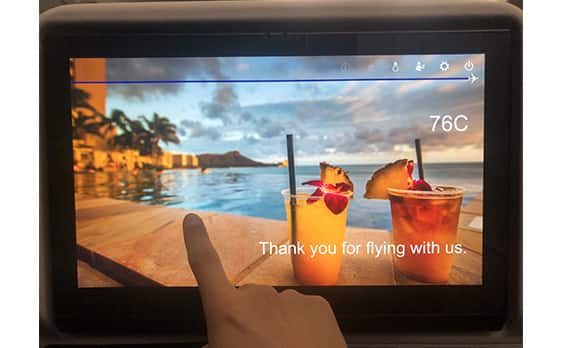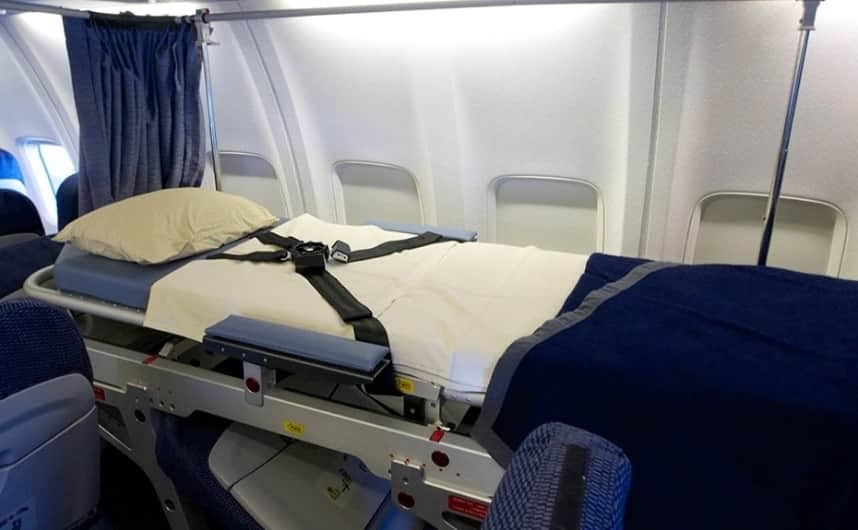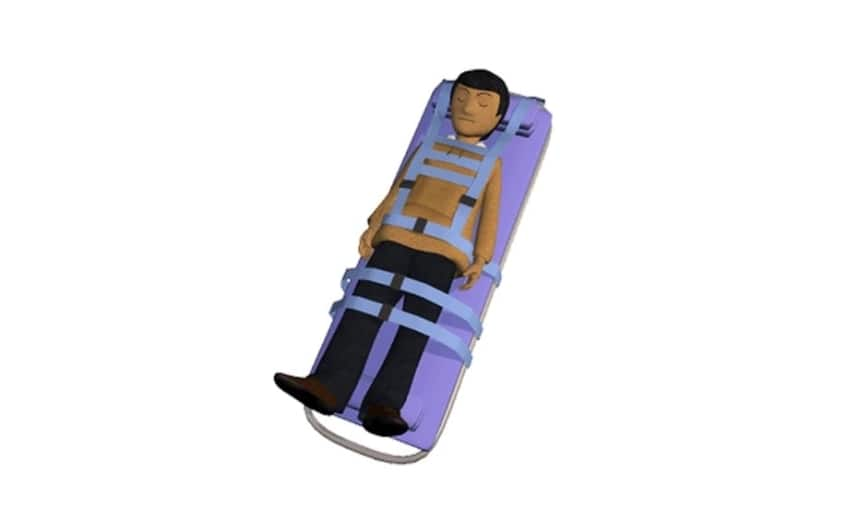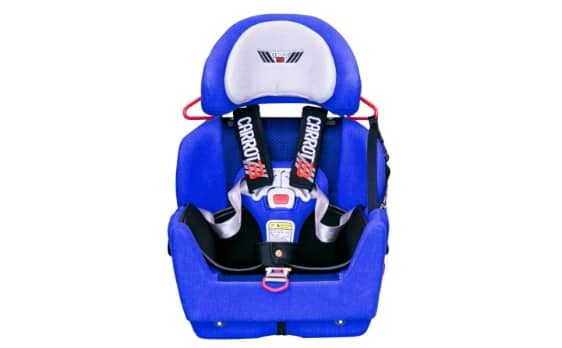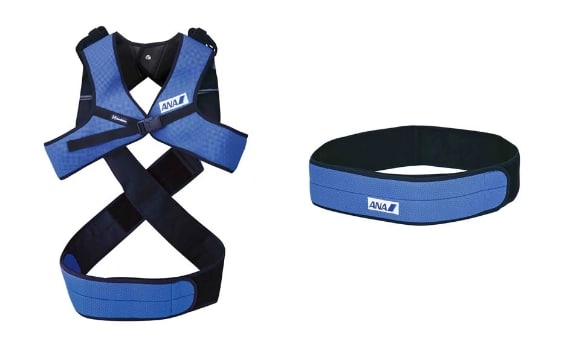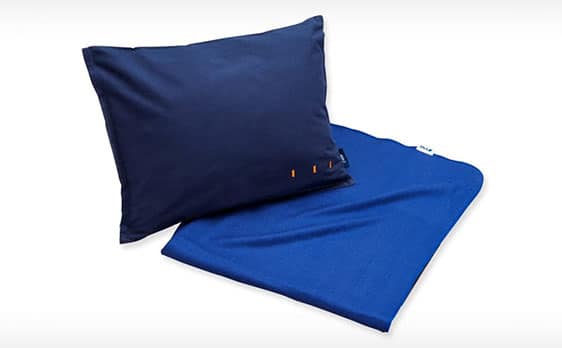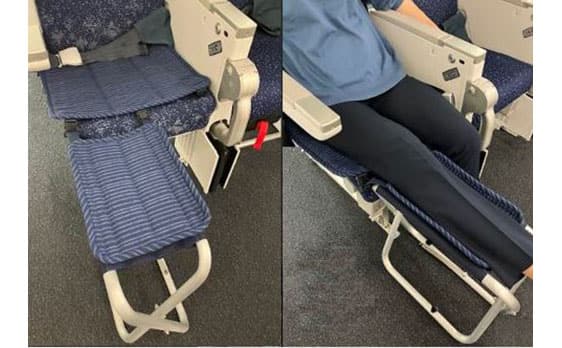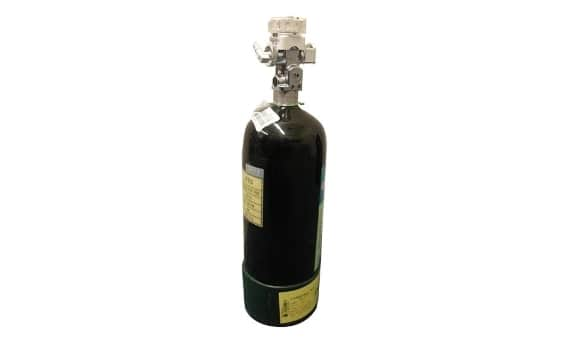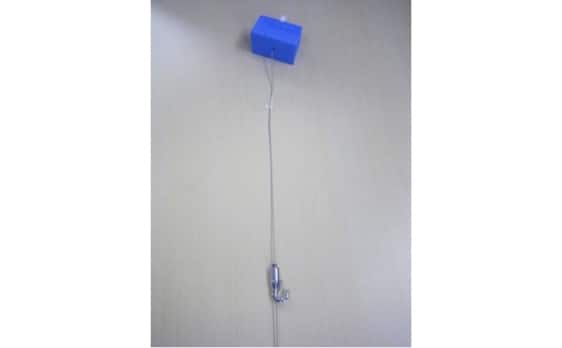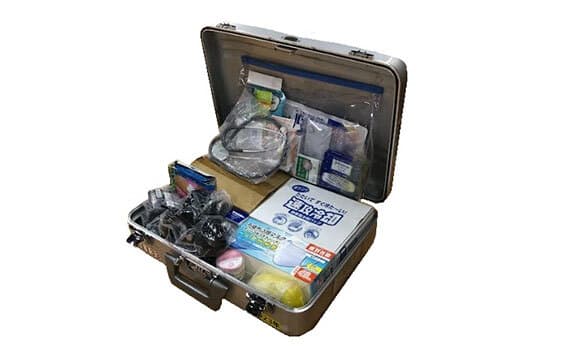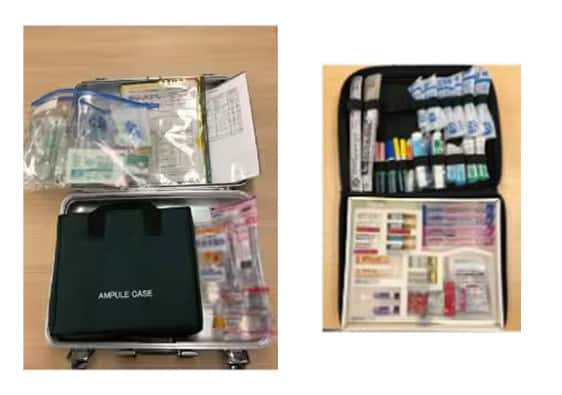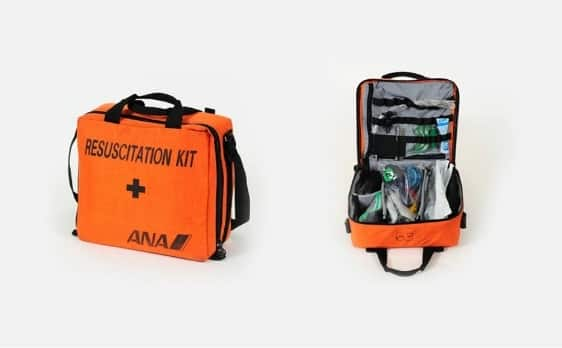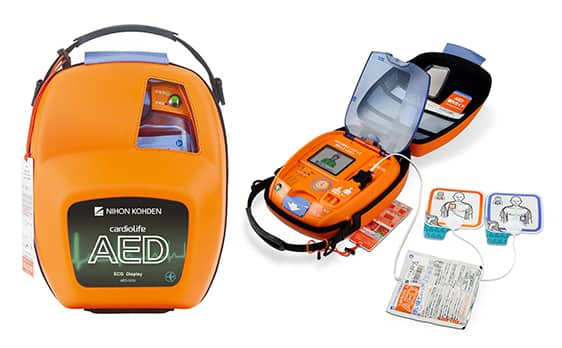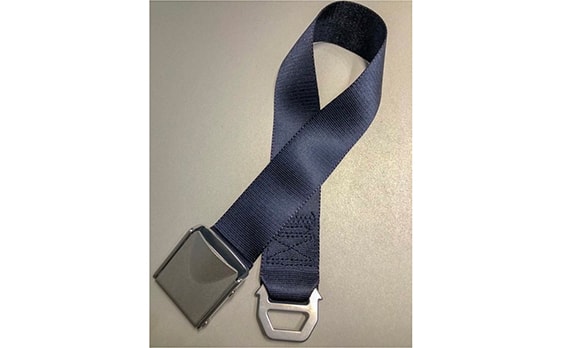Service Equipment
This page provides information about service equipment and facilities available at the airport and on board the aircraft. Please note that some of the equipment is available only at certain airports, on certain aircraft types, or only in Japan.
For rental items that need to be reserved in advance, please contact the ANA Disability Desk.
On Departure
"Special Assistance" counter
Assistance in ANA Lounges
Lounges
Communication Tools
Communication Support Tools
Assistance by staff with Sign Language Badge
at the security checkpoint
Wheelchairs/Walking Aids/Electric Carts
Airport Wheelchair
Walking Aids: Rollators
Electric Cart
Protective Cases and Covers for Wheelchairs
Equipment to Assist with Boarding
OMOTENASHI GUIDE
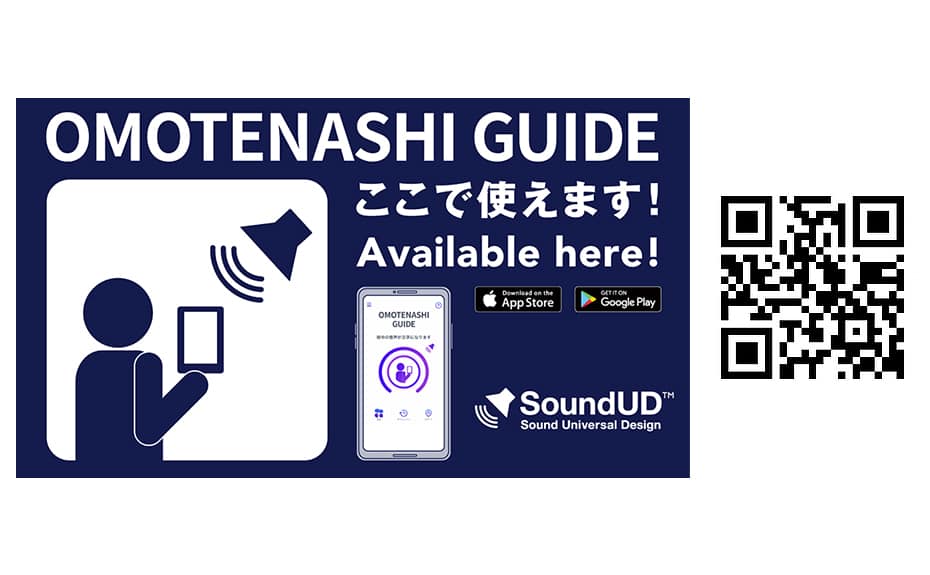
If you download the app, you can document the announcement that is flowing at the boarding gate and display it on your smartphone.
In addition to Japanese, English, Chinese, and Korean are also supported, and can be translated and displayed in the language of your choice.
- * This service is available at departure gates for domestic airports in Japan.
- * From here, you will be redirected to an external site.
Available at the following airports
- 50 domestic airports in Japan
Boarding Gates
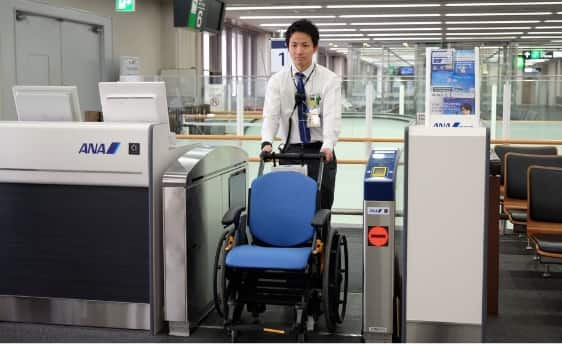
This boarding gate is wide enough for passengers using wheelchairs, strollers, and walking aids to pass through.
Available at the following airports
- 50 domestic airports in Japan
Stepless boarding bridge
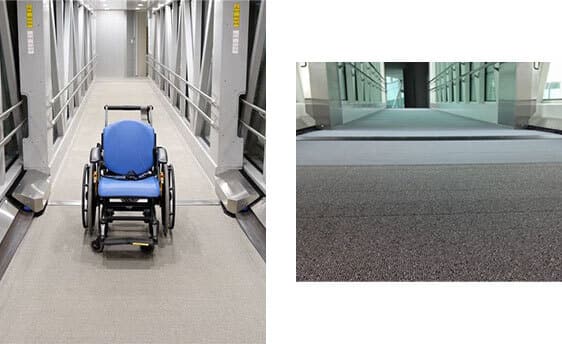
This is a boarding bridge with no steps. People in wheelchairs can cross smoothly.
Boarding Ramp
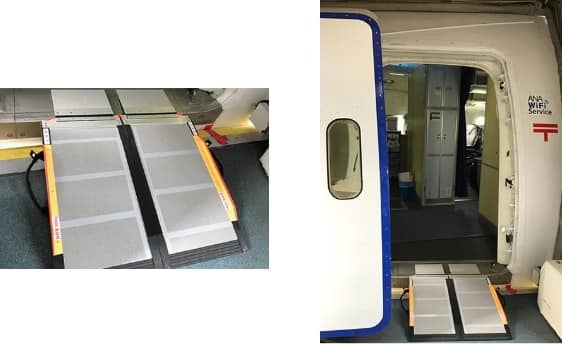
This ramp is used to assist customers with boarding.
Available at the following airports
- 50 domestic airports in Japan
Assisted Stretcher
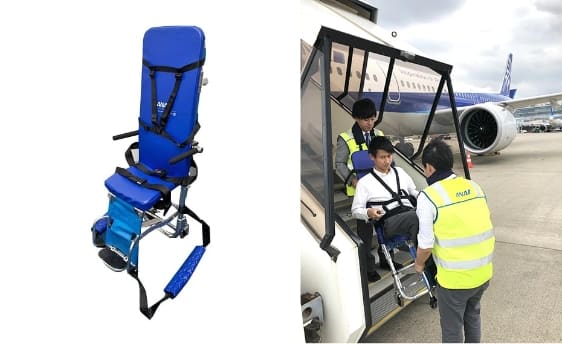
Assisted stretchers are used at airports at which passenger boarding lifts or wheelchair stair lifts are not available or equipped.
You can stay seated while the staff will take you up and down the stairs and to your seat in the cabin.
Available at the following airports
Sapporo (New Chitose), Tokyo (Haneda), Tokyo (Narita), Nagoya (Chubu), Osaka (Itami), Osaka (Kansai), Osaka (Kobe), Fukuoka, Okinawa (Naha), Wakkanai, Okhotsk Monbetsu, Memanbetsu, Asahikawa, Nemuro Nakashibetsu, Kushiro, Hakodate, Aomori, Odate-Noshiro, Akita, Shonai, Sendai, Fukushima, Hachijojima, Niigata, Shizuoka, Toyama, Komatsu, Noto, Okayama, Hiroshima, Iwakuni, Yamaguchi Ube, Tottori, Yonago, Hagi-Iwami, Takamatsu, Tokushima, Matsuyama, Kochi, Saga, Oita, Kumamoto, Nagasaki, Tsushima, Goto Fukue, Miyazaki, Kagoshima, Miyako, Ishigaki
Specifications
- Seat width: Approx. 38 cm
- Seat depth: Approx. 26.5 cm
- Seat height: Approx. 52 cm
- Height: Approx. 136 cm
- Seat back height: Approx. 84 cm
Passenger Boarding Lift

This is a dedicated airport vehicle equipped with a lifting device. When boarding is conducted using boarding stairs, the passenger boarding lift can be used to elevate the customer in a wheelchair directly to the aircraft door.
Available at the following airports
Sapporo (New Chitose), Tokyo (Haneda), Tokyo (Narita), Nagoya (Chubu), Osaka (Itami), Osaka (Kansai), Fukuoka, Okinawa (Naha)
Passenger Boarding Stairs Equipped with Wheelchair Stair Lift
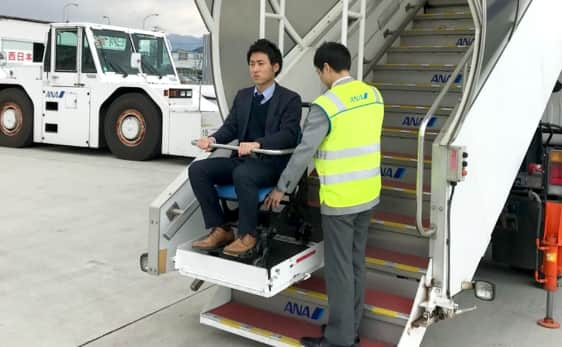
The wheelchair stair lift allows wheelchairs to be lifted over the boarding stairs.
May not be available with certain aircraft types.
Available at the following airports
Tokyo (Haneda), Tokyo (Narita), Nagoya (Chubu), Osaka (Itami), Fukuoka, Okinawa (Naha), Rishiri, Hakodate, Okayama, Matsuyama, Kumamoto, Miyako, Ishigaki
Powered Stair Climbing Device (S-Max)
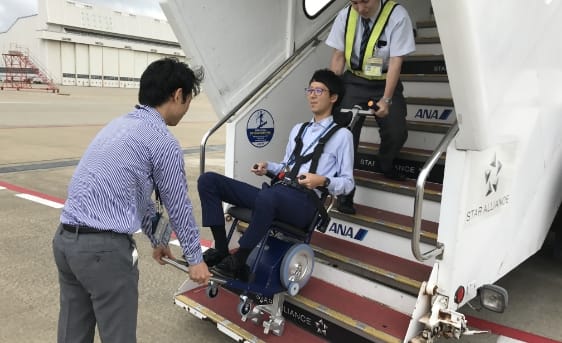
This is an option for boarding the aircraft if a passenger boarding lift or wheelchair stair lift is not available. S-Max with its driving function enables smooth boarding as it assists in the ascending and descending of stairs and moving to the seat in the cabin while as state of customer seating.
Available at the following airports
Tokyo (Narita), Osaka (Itami), Okhotsk Monbetsu, Sendai, Fukuoka





